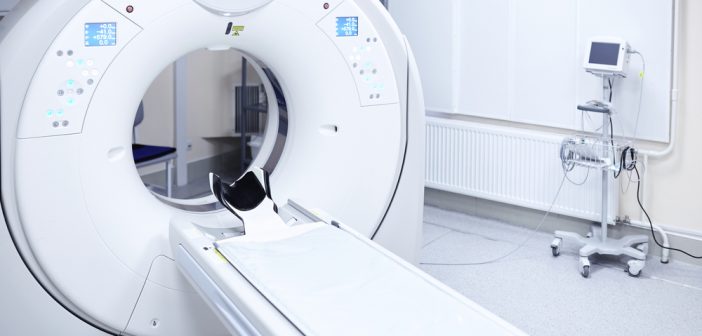Keeping up with timely EU MDR updates is crucial for medical device companies, enabling them to ensure adherence to the set of regulations that govern the marketing and sale of medical device products in the European Economic area.
This article, authored by Kolabtree’s freelance scientist Aditi Kandlur, elaborates on the MDR updates you need to keep an eye on as we traverse 2022. Aditi is a molecular biologist with a passion for writing and changing the world one step at a time. She can be contacted on Kolabtree for freelance projects related to medical writing, molecular biology and behavioural neuroscience.
Across the world, the medical devices and medtech sectors of industries aim to place high-quality products capable of delivering quality healthcare to patients. However, attaining such a status of high quality requires companies to invest their resources into strategic planning, research and development, engineering and compliance with regulatory standards.
The WHO also supports and emphasizes that its Member States develop and implement such measures and policies through the “Global Model Regulatory Framework for Medical Devices including in vitro diagnostic medical devices.”
In the European region, the European Medicines Agency (EMA) oversees the regulatory process while advising on scientific matters to other designated organizations/notified bodies. Each European Union(EU) Member State has an accredited notified body responsible for performing conformity assessments and evaluations of medical device or medtech manufacturers. Passing the inspection validates the manufacturers with the CE (Conformité Européenne) mark on the medical device.
The CE mark certification makes the product open to trade in the EU. The accreditation also denotes that the product conforms to all the regulatory requirements under the new Medical Devices Regulation (MDR updates 2017/745). This CE marking benefits the manufacturers in that they have to adhere to a uniform set of guidelines while designing and manufacturing their products across the European Economic Area (EEA). These guidelines ensure safer products reach the user thereby reducing the claims raised against liability or damages.
The MDR was introduced in April 2017 but adopted later in May 2017. The stakeholders took a considerable time before transitioning into the new structure. The MDR provides new and revised legal framework changes related to medical devices. While doing so, it also restructures the functional and accommodating responsibilities of the EMA and its associated notified bodies of the EU Member states.
MDR updates you need to know
The MDR updates for 2022 has seen certain specific modifications by the European Commission, mostly additions to the MDR standard framework set up in 2021. These nine new additional clauses involve marketing, biological evaluations, quality management systems as well as sterilization of medical devices and/or associated medical products among others. (Table 1/Fig 1).
According to the Commission, “devices that are in conformity with the relevant harmonised standards, or the relevant parts of those standards, the references of which have been published in the Official Journal of the European Union, are to be presumed to be in conformity with the requirements of that Regulation covered by those standards or parts thereof.”
In May 2022, a new classification system for companion/ in vitro diagnostics was introduced. They established the role and necessity of companion diagnostic tools in identifying compatibility with the patients being offered medical devices as a mode of treatment. All these new regulations have been enforced to empower manufacturers with clarity such that they are able to comply with the standards efficiently.
Table/Fig. 1: Highlights of the major MDR updates
| Name of guideline | Brief description/ Clause | Effective date | Transition period requested |
| Guideline on quality documentation for medicinal products when used with a medical device
(EMA/CHMP/QWP/BWP/259165/2019) |
This guideline instructs the stakeholders to present product-specific quality aspects of a medical product, or device part, that may have an impact on the quality, safety and/or efficacy of the medical device. This quality-related information is to be presented in the marketing authorisation dossier and in accordance with Directive 2001/83/EC and/or Regulation (EC) 726/2004. | 1st January 2022 | None |
| Commission Implementing Decision (EU) 2022/6 | 6. EN ISO 10993-9:2021- Biological evaluation of medical devices – Part 9: Framework for identification and quantification of potential degradation products
7. EN ISO 10993-12:2021- Biological evaluation of medical devices – Part 12: Sample preparation and reference materials 8. EN ISO 11737-1:2018- Sterilization of health care products – Microbiological methods – Part 1: Determination of a population of microorganisms on products 9. EN ISO 13408-6:2021- Aseptic processing of health care products – Part 6: Isolator systems 10. EN ISO 13485:2016- Medical devices – Quality management systems – Requirements for regulatory purposes 11. EN ISO 14160:2021- Sterilization of health care products – Liquid chemical sterilizing agents for single-use medical devices utilizing animal tissues and their derivatives – Requirements for characterization, development, validation and routine control of a sterilization process for medical devices 12. EN ISO 15223-1:2021- Medical devices – Symbols to be used with information to be supplied by the manufacturer – Part 1: General requirements 13. EN ISO 17664-1:2021- Processing of health care products – Information to be provided by the medical device manufacturer for the processing of medical devices – Part 1: Critical and semi-critical medical devices 14. EN IEC 60601-2-83:2020- Medical electrical equipment – Part 2-83: Particular requirements for the basic safety and essential performance of home light therapy equipment |
4th January 2022 | None |
| In-Vitro Diagnostic Devices Regulation (Regulation (EU) 2017/746) | The guidelines bring in a new classification system for companion/ in vitro diagnostics that identify patients that are compatible with the medical product as means of treatment. | 26 May 2022 | 5 years |
| MDCG 2019-9 Rev.1 changes | MDR updates regarding drawing up summaries of safety and clinical performance for high-risk devices such as implantable and Class III devices during the assessment by the notified body. They have also detailed a requirement of the manufacturers assigning a unique reference code/number to such summaries. This move is intended to bring in more transparency and ease of access to information. | 24 March 2022 | 2 years for class 3 medical devices and implantables; 4 years for others |
Keeping up with the MDCG – MDR updates
The Medical Device Coordination Group (MDCG) was established by the MDR. The MDCG panel comprises at least one/two experts from each member state and two deputies. The panellists are selected based on their expertise in medical and in vitro diagnostic devices. The panel is appointed for a period of three years.
The MDCG has a range of roles that greatly influence manufacturers as well as the notified regulatory bodies-
- Providing guidance for the systematic implementation of the MDR
- Monitoring technical progress as well as developing norms and standards
- Assessing Notified Bodies of the member states
- Assisting competent authorities in a wide range of regulatory areas.
- Focal point for the European Commission to coordinate the functioning of the Notified Body Coordination Group under Article 49.
The MDCG has an undeniable influence on the implementation of the Regulation and therefore should not be underestimated. The panel has been responsible for bringing about the transition from MDD 93/42/EEC to the new MDR 2017/745. MDR updates and IVDR guidelines by the MDCG replaced the older MEDDEV documents. It is important for manufacturing companies to note that these guidelines by the MDCG are not legally binding, however, the smarter choice would be careful consideration and practical implementation as and when necessary. The MDCG enforces the implementation of the regulations by means of Article 105 of the MDR, which states that they are responsible for contributing toward “effective and harmonized implementation of the Regulation.”
Through the MDCG, the benchmark standards to demonstrate the safety and performance of their products have increased for the manufacturers. The guidelines are more flexible and inclusive when compared to the Medical Device Directive (MDD). The quality reports sent by the manufacturers are based on manufacturer-sponsored clinical studies and or peer-reviewed literature that exclusively focuses on the subject device. These data sources are viewed as a gold standard and also the most direct evidence in support of a device.
MDCG position paper 2022-11 (released in June 2022)
MDCG releases position papers that are not legally binding and are not European Commission documents. However, such documents are considered as reflecting the official position of the European Commission.
On 13 June 2022, a Position paper MDCG 2022–11 was published on the European Commission website and endorsed by the MDCG. The MDCG 2022–11 serves as a notice to manufacturers with an aim to ensure timely compliance with MDR requirements. The document speaks with an intention to ensure that medical devices can continue to be placed on the market without shortages. It highlights that it is crucial for all manufacturers to evolve their system- involving steps to finalize transition to the MDR and obtaining the CE mark after applying to a notified body by submitting complete and compliant applications. The MDCG emphasizes that the manufacturers act as soon as possible and be well ahead in the procedures before the end of the transition period to ensure timely compliance.
This comes at a time where roughly “70 % of AIMDD/MDD certificates will expire in 2024 (by 26 May 2024 at the latest)”. The MDCG instructs the manufacturers to take appropriate action as the notified bodies might not be able to assess all corresponding files due to a possible surge in documentation within the first months of 2024.
How can hiring expert medical writers help you?
Transitioning from MDD to MDR is a challenge that manufacturers face. They would need to make smart decisions that would allow the process to be systematic and organized. This would require the companies to hire stakeholders that have the expertise and skill to specialize in medical devices and European MDR regulation (EU MDR 2017/745) and assist the company through a blend of scientific, medical/clinical, regulatory, and technical competencies.
These stakeholders are regulatory medical writers/ Clinical Evaluation Report (CER) writers who present clinical data analysis and evidence or even literature reviews after performing gap analysis (for the MDD-MDR transition).
What are some relevant skills and experiences to focus on when evaluating the possibility of hiring a CER writer? It is widely acknowledged that finding such skilled expert medical writers is a big hassle. They also have vast experience in writing documents such as clinical protocols, informed consent documents, and clinical study reports (CSR), whilst also helping in clinical trial/study data analyses. The challenge comes while hiring the right personnel/team who can juggle regulatory affairs and technical medical/CER writing. If needed, the company can recruit a team consisting of CER/medical writers and medical doctors who can serve as the source of information about their expertise that lies in the specific therapeutic area.
Role of regulatory medical writers
Regulatory medical writers are usually scientists or clinicians by profession or training. They work through the different stages of certification processes to prepare technical documents. Usually, they specialize in documentation for drug candidates and medical devices along with associated medical products.
The main responsibility of medical writers is to protect patient data in the documents through appropriate anonymization techniques. This includes various means such as avoiding using direct identifiers (IDs) that are directly attributable to a specific individual such as names, initials, addresses, etc.
That includes even masking/ generalizing quasi-IDs such as sex, race, birth dates etc. This is done to avoid patient re-identification or tracing back of patients. With regards to medical devices, medical writers do not provide specific details- serial numbers or any other device identifiers.
The responsibilities of medical writers are summarized as per the EMA Policy 0070: “what [we]ultimately want to achieve is to retain a maximum of scientifically useful information on medicinal products for the benefit of the public while achieving adequate anonymisation.”
Where does Kolabtree fit in this?
Kolabtree serves as a platform to connect medical device, biotech and pharma companies, amongst others, to a large body of independent highly qualified experts like scientific consultants, medical editors and writers who offer their services on-demand. These freelancers work with clients within the secure Kolabtree platform, helping biotech firms, medical device organizations, pharmaceutical companies or contract research organizations (CROs), health insurance companies, health authorities, charities, government and quasi-government agencies, and doctors’ organizations, among others.
Outsourcing can turn out to be a great strategy to fill critical project demands. Freelance medical writers can turn out to be an excellent resource for companies that need their skills on a regular basis to deliver the best results. This also offers smaller companies a chance to hire consultants on a pay-as-you-go basis, testing new ideas or completing fixed duration projects without having to hire an in-house resource.
Kolabtree, a secure platform that also guarantees complete date confidentiality and safe payments, has accredited expert writers certified by the European Medical Writers Association (EMWA), the American Medical Writers Association (AMWA), or the International Science Writer Association (ISWA).
References
- Prioritizing medical devices (who.int)
- Medical devices | European Medicines Agency (europa.eu)
- Europe Medical Devices Regulation (MDR) CE Marking Regulatory Process (emergobyul.com)
- Medical Devices – CE Marking – CE Marking, Ce Mark, Product Marking, System certification (qvccert.com)
- How do you benefit from CE marking?
- Why is it important to have CE marking for medical devices – Biocodex (biocodexphame.fi)
- European Commission publishes second batch of harmonized standards under MDR | RAPS
- Regulatory Challenges in Writing Clinical Evaluation Reports (CER) (celegence.com)
- MEDDEV is going, MDCG is coming – an update of the guidance documents – seleon GmbH
- Billiones, Raquel. “Medical devices in the disclosure era and the role of medical writers.” Medical Writing 26 (2017): 32-34.
- AKRN | The 4 Pillars of Successful CER Writing | Medical Device CRO (akrnconsulting.com)
- Regulatory Challenges in Writing Clinical Evaluation Reports (CER) (celegence.com)
- Why outsource biotech website content to expert writers – (kolabtree.com)







